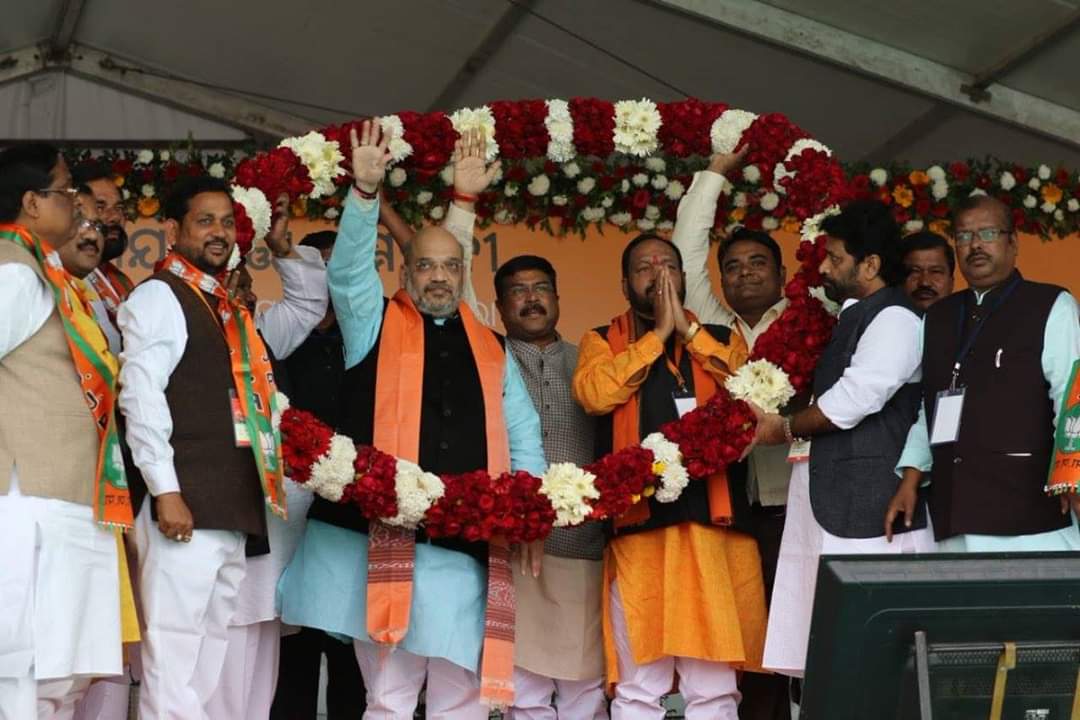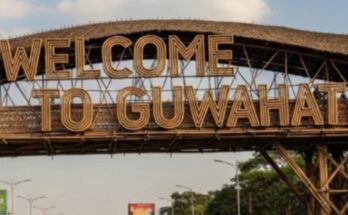By Ashutosh Mishra
Unlike Prime Minister Narendra Modi who is yet to don the combat gear against Odisha chief minister Naveen Patnaik, triggering speculation about a secret pact between the two leaders, BJP president Amit Shah has stepped up his attack on the Biju Janata Dal government in a move bound to raise the morale of state party leaders ahead of the crucial general elections.
Shah’s sabre-rattling at Salepur on Tuesday expectedly fired up the cadres who had been feeling let-down by Modi’s reluctance to take on Patnaik during his last few visits to the state. The Prime Minister appeared to have deliberately toned down his aggression during the public meetings at Khurda, Baripada and Bolangir.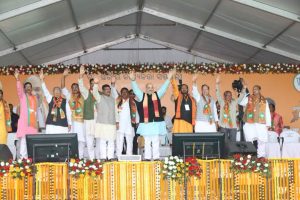
Now Shah seems to be making amends for that. Significantly BJP chief’s Tuesday visit came in the wake of Patnaik’s sister and well known author Geeta Mehta turning down the Padma award, which was supposed to be a conciliatory gesture ahead of the polls. Mehta’s gesture appears to have convinced the saffron party bosses that Odisha chief minister is in no mood for compromises and it would be futile trying to adopt a soft approach towards him.
No wonder, Shah did not pull his punches against Patnaik as he issued the call for building up a new Odisha, which, he said, was possible only if the BJP government was voted to power in the state.
“There are still households without assured water supply and electricity. A new and prosperous Odisha is possible only if a BJP government comes to power in the state,” he told party workers while reeling out statics to prove that the Centre had sanctioned more than Rs.3 lakh crores for the development of the state.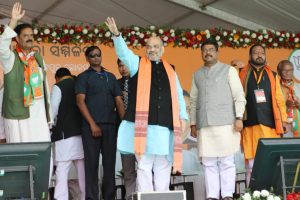
In an out and out election speech during which Shah made repeated pleas for Modi being voted back to power again at the Centre and took aim at Congress and its allies, he also played the tribal card and tried to strike an emotional chord with the electorate by raising the issue of the missing keys of Puri Jagannath temple’s Ratna Bhandar. “Modiji created the district mineral fund with an eye to the welfare of the tribals. He wants that the money, which used to line the purses of industrialists, should help make the lives of tribals better,” said Shah.
Aware that Ratna Bhadar was an emotive issue he played on it. “How can the people who could not safeguard the Ratna Bhandar be entrusted with the security of the state?” he asked as if mocking the Patnaik government. Shah, who described the BJD and Congress as two sides of the same coin, also targeted Patnaik’s Achilles heel urging people to elect a chief minister who knew Odia.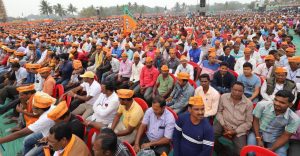
The BJP chief, who has set state party leaders a stiff target of winning 120 out of 147 assembly seats, appears to be still treating the results of the 2017 panchayat elections, when the party won 297 zila parishad seats, a quantum jump from 36 in 2012, as the benchmark. This was obvious from the way he sought to remind the workers at Salepur of the last panchayat poll outcome while exuding confidence about lotus sprouting in the state in the general elections.
Shah, the master strategist, seems to be working to a plan. Having set the state leaders an uphill but not impossible target of 120 seats he knows he has to go all out against Patnaik in the state. But he would not mind the Prime Minister making concessions here and there for the chief minister in the hope that he 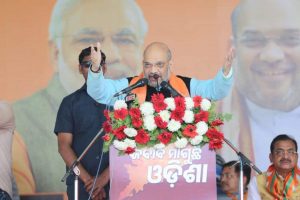 would bail the BJP out in a tight post-poll scenario. While for Shah, who is the general leading the party from the front, there is equal focus on assembly and Lok Sabha seats in the state, Modi’s arithmetic revolves entirely around the latter. So while he would not like to hurt Patnaik’s interests in Odisha, he would like the chief minister to return the favour by ensuring that BJP wins a few more Lok Sabha seats.
would bail the BJP out in a tight post-poll scenario. While for Shah, who is the general leading the party from the front, there is equal focus on assembly and Lok Sabha seats in the state, Modi’s arithmetic revolves entirely around the latter. So while he would not like to hurt Patnaik’s interests in Odisha, he would like the chief minister to return the favour by ensuring that BJP wins a few more Lok Sabha seats.
That explains the marked difference in the approach of these to two top BJP leaders towards Patnaik who, though, is in a much stronger position at the moment and can afford to ignore both of them.
Photo: Sanjib Mukherjee

